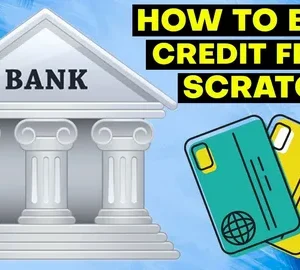

Introduction: Why You Borrow More Than You Planned
Psychology Loan Apps: Ever opened a loan app just to “check your limit” and ended up borrowing? You’re not alone. Millions of people in Canada and the USA fall into this trap daily. Loan apps are not only financial tools—they are psychological machines carefully designed to nudge, push, and sometimes trick you into borrowing more money than you intended.
This isn’t about chance; it’s about strategy. Behind every bright notification and “exclusive loan offer” is a calculated play on human behavior. Today, we’ll peel back the curtain and expose the psychological tactics loan apps use—so you can recognize them, resist them, and make smarter financial choices.
The Subtle Art of Persuasion in Loan Apps
Loan apps aren’t just offering credit—they’re persuading you. They study how people think, what triggers emotions, and how decisions are made under stress. This is the psychology of borrowing, and it’s surprisingly similar to the strategies casinos and social media platforms use.
Key Tactics Include:
- Scarcity: “This loan offer expires in 24 hours.”
- Social Proof: “Thousands of people just like you borrowed today.”
- Ease of Use: One tap, and money appears in your account.
- Personalization: “John, your exclusive loan limit has increased.”
By removing friction and amplifying temptation, loan apps make borrowing feel like an easy win—even when the long-term consequences are steep.
The Role of Instant Gratification
Humans crave rewards, and loan apps know this. Instead of waiting weeks for a bank to approve a loan, these apps promise instant access to cash.
This plays directly into our dopamine system—the same part of the brain activated by gambling or scrolling TikTok. The thrill of getting money instantly overrides rational decision-making.
Research shows that people are far more likely to choose small, immediate rewards over larger, delayed ones【see: Behavioral Economics Principles】. Loan apps weaponize this tendency by promising money in minutes, not months.
Fear of Missing Out (FOMO) in Finance
Another trick? FOMO.
Apps constantly push messages like:
- “Hurry, your loan offer is expiring soon.”
- “Unlock your new higher credit limit today.”
- “Borrow now before interest rates rise.”
This creates urgency, making borrowers act quickly instead of thinking critically. Much like online shopping flash sales, loan apps manufacture scarcity to push you into debt faster.
The Comparison Trap: Loans vs. Credit Cards
Here’s where psychology gets clever. Loan apps often market themselves as “cheaper than credit cards” to draw you in.
But is that always true? Let’s compare:
| Feature | Loan Apps (Canada/USA) | Credit Cards (Canada/USA) |
|---|---|---|
| Approval Time | Minutes | Days–Weeks |
| Interest Rate (avg.) | 20–36% APR | 16–24% APR |
| Repayment Flexibility | Fixed, short-term | Flexible, revolving |
| Emotional Trigger | Urgency + ease | Familiarity + rewards |
While apps may appear more convenient, their repayment terms are often more rigid, leaving you trapped in cycles of short-term borrowing.
How Notifications Manipulate You
Loan apps don’t just sit on your phone quietly. They send strategic notifications at specific times:
- Payday weekends: when you feel flush with cash.
- Mid-month: when your money is tightest.
- Late at night: when decision-making is impaired.
Each ping is designed to pull you back into the app—sometimes even when you don’t need money. It’s a digital whisper saying: “You deserve this loan right now.”
Anchoring: The “Bigger Loan” Trick
Anchoring is a psychological bias where people rely heavily on the first piece of information they see. Loan apps use it to upsell you.
Example:
- They first show a loan offer of $1,000.
- Then they highlight a “special limit” of $3,000.
Even if you only needed $500, your brain now sees $3,000 as the new “normal.” Borrowers often accept more than planned because the higher amount feels like a deal.
Social Proof and Peer Pressure
Loan apps often sprinkle in subtle social proof:
- “5,000 people borrowed in your city this week.”
- “90% of users borrow more than once.”
This makes borrowing seem common—and if everyone’s doing it, maybe you should too. This psychological nudge makes debt feel socially acceptable, even smart.
The Dark Side of Gamification
Many apps gamify borrowing:
- Progress bars showing your “credit growth.”
- Badges for being a “loyal borrower.”
- Promises of higher loan limits after repayment.
It feels like a video game. But instead of unlocking new levels, you’re unlocking new debt.
Gamification turns financial risk into play, making it harder to see the seriousness of repeated borrowing【see: Financial Consumer Agency of Canada】.
Why Loan Apps Target Millennials and Gen Z
Younger generations in Canada and the USA are more likely to use loan apps. Why?
- Tech Comfort: They’re used to digital wallets and instant apps.
- Economic Struggles: Rising rent, inflation, and gig work make cash shortages common.
- Impatience: Quick solutions feel better than long waits.
Loan companies know this and design their platforms to resonate with youthful spending habits.
Emotional Marketing: “We’re Here to Help”
Look closely at loan app ads. They rarely talk about interest rates. Instead, they focus on emotions:
- Relief: “Say goodbye to financial stress.”
- Empowerment: “Take control of your money.”
- Belonging: “Join thousands of smart borrowers.”
The goal? Make borrowing feel like self-care, not debt.
When Convenience Turns Into a Debt Spiral
The biggest danger isn’t one loan—it’s the cycle.
- Borrow $500 this month.
- Repay $600 next month.
- Need another $500 immediately after repayment.
This loop is how loan apps quietly turn temporary borrowers into long-term customers.
The apps thrive on repeat borrowing. Each cycle increases profits for them—and stress for you.
Practical Tips to Resist Loan App Psychology
Knowing the tricks is the first step. But how can you fight back?
Try These Strategies:
- Turn Off Notifications: Reduce temptation.
- Borrow Only What You Need: Not what’s “offered.”
- Compare Options: Credit unions and traditional banks may be safer.
- Pause Before Borrowing: Wait 24 hours before deciding.
- Track Repayments: Never lose sight of interest costs.
Conclusion: Take Back Control
Loan apps aren’t evil—they provide real financial lifelines. But their secret psychology means they profit when you borrow more, more often, and with less thought.
By recognizing their tactics, you can stop reacting emotionally and start making rational financial decisions. Remember, your money should serve you—not the apps.
FAQs
1. Are loan apps safe to use in Canada and the USA?
Yes, many are licensed, but always check if they’re regulated by financial authorities.
2. Why do loan apps offer me more money than I need?
It’s a psychological tactic to make you anchor your decision on a higher figure.
3. Do loan apps have higher interest rates than banks?
Often yes. They trade convenience for higher costs, especially for short-term loans.
4. How can I avoid falling into a loan app debt spiral?
Borrow only for emergencies, track payments, and explore cheaper credit options first.
5. Is it better to use a credit card than a loan app?
It depends. Credit cards offer flexibility, but loan apps can be useful for emergencies. Compare rates and terms before deciding.






